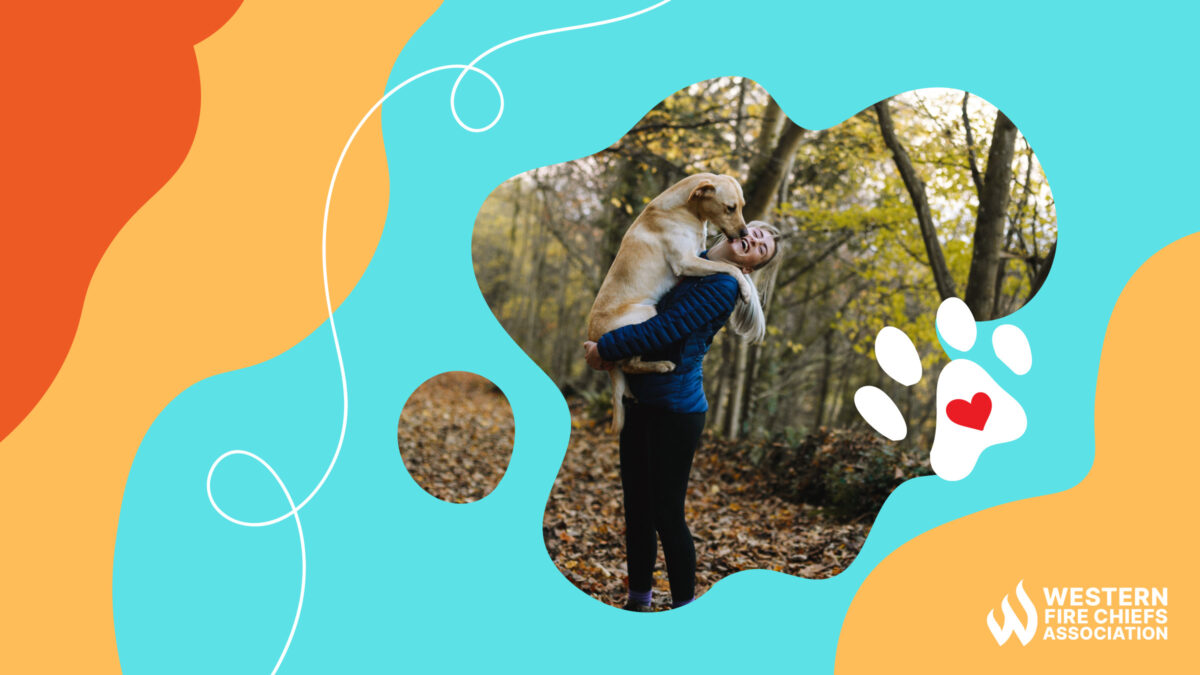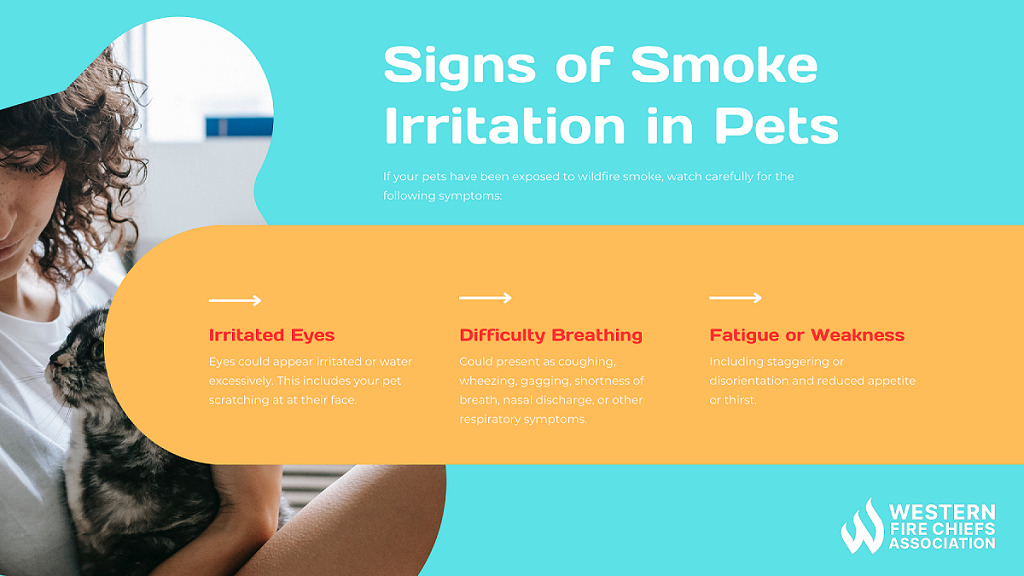Firework Safety Tips: How to Stay Safe
Discover essential firework safety tips to ensure a dazzling display without accidents. Learn how to celebrate responsibly with expert guidance from WFCA.
Learn about the risks to pets during wildfires and how to protect them from wildfire smoke and create an evacuation plan to provide shelter from the experts at the WFCA.
Published:May 16, 2023
Edited:March 1, 2024

Learn about the risks to pets during wildfires and how to protect them from wildfire smoke and create an evacuation plan to provide shelter from the experts at the WFCA.
When wildfire threatens a community, humans are able to mitigate their own risk of smoke exposure and prepare for evacuation. Pets, however, do not understand. They need you to protect them from wildfire dangers. Studies of the effect of wildfire smoke on humans and animals show respiratory symptoms and a decrease in lung function.1 Learn ways to keep your pets safe from the health risks of smoke exposure and how to incorporate pets into your evacuation planning.
Wildfire smoke is harmful to respiratory and cardiovascular health. Young and old pets are particularly at risk, as are pet breeds of cat or dog that are brachycephalic.2 If your pets have been exposed to wildfire smoke, watch carefully for the following symptoms:3
If a pet is having difficulty breathing or eye irritation, seems disoriented, or has reduced appetite or thirst, consult your veterinarian.3

Wildfire smoke is full of particle pollutants, which are a mix of microscopic particles small enough to hang in the air. These particles can enter the lungs or even the bloodstream, posing a major health threat.4 Fires and smoldering embers also release carbon monoxide (CO). When inhaled, this colorless, odorless gas reduces oxygen delivery in the body. In high concentrations, CO can lead to death as the body fails to absorb enough oxygen.5
Avoiding smoke is the only way to avoid wildfire smoke exposure. There are several things you can do to protect your health and your pets’ health if you live in a wildfire-prone area.
It is important to be aware of active emergencies in your area and prepare to evacuate if necessary. Gather resources ahead of time in case you need to leave your home quickly. Before an emergency, make sure to do the following:
Pets are a part of your family, so remember to include your animals in your evacuation planning. Make a plan for staying with family, at a shelter, or a pet-friendly hotel. You should also prepare an evacuation kit that includes items to address your pet’s basic needs, medical issues, safety, and stress.2 Consider including the following items:
Discover essential firework safety tips to ensure a dazzling display without accidents. Learn how to celebrate responsibly with expert guidance from WFCA.
Explore the role of AI in wildfire prediction with guidance from the WFCA. Learn how advanced algorithms and data analytics enhance early detection and response.
Empower your community with a detailed guide on creating a Wildfire Protection Plan. Explore crucial steps and strategies with expert guidance from the WFCA.